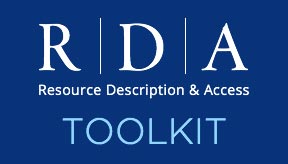Q&A with Cataloging for Kids author Michele Zwierski on RDA

This American summer at ALA Digital Reference, access to education is our priority. Forums, webinars, and blog interviews with RDA educators are all scheduled into our autumn. With that priority in mind, we recently asked Nassau Library System cataloger Michele Zwierski - author of the new book Cataloging Correctly for Kids - a few questions about the role of RDA in current children's cataloging practices. Here is how she enlightened us:
ALA: Tell us about the state of children’s cataloging generally. What should RDA catalogers who are interested in it but don’t specialize in it know?
MZ: I think that the state of children’s cataloging is, for the most part, reflective of the state of all cataloging today. As a cataloger, I am trying to provide the best information to users as quickly as possible in a format that is consistent and accurate. During the pandemic, public catalogs have been used more frequently, as many library users switched to accessing library collections remotely. Sometimes the only way users could access collections was online. Catalogs that contain consistent, correct records perform better.
Catalogers who do not normally work with children’s resources, should, as with all their bibliographic record creations, keep the user front and center. How would a child search for this resource in the catalog? What concepts does this resource showcase that could be of interest to parents or educators? RDA allows catalogers to more effectively meet users’ needs.
Children’s collections are often the first place where new formats show up, and as a result, children’s librarians will always present technical services departments with the most challenges, such as locally created materials or new shelf arrangement ideas. Catalogers not acquainted with children’s library services should not be afraid to improvise. It is important as a cataloger to always support the service initiatives of the subject specialists, even if it means leaving your comfort zone.
CCK6 does provide insight and information for anybody working with children’s materials regardless of level of cataloging expertise or experience with children’s resources .
ALA: What inspired you to incorporate a discussion of RDA into this edition of your book on children’s cataloging?
MZ: Knowing about the existing cataloging standards is key to efficiently building an online catalog. As a cataloger, I work with a lot of copy cataloging. When a change happens, often I see it first in a record created by another institution. This could be a new format, a change in the form of a creator’s name, or a change in cataloging standards.
Recognizing changes is the first step. The next step would be acting on those changes. If many copy cataloging records are coming in that reflect a change in a cataloging standard, you must decide locally on how to proceed. Do you update your editing procedures to incorporate this new standard? Would these changes make the catalog better? Are there any advantages for the cataloger? Are there any advantages for the user? How does this new cataloging piece look and operate in your ILS? In CCK6, I hope that we present some fundamental information, so that a reader might understand that knowing something about RDA will be valuable when making local decisions.
ALA: What does the RDA implementation of LRM mean for catalogers of children’s resources?
MZ: In my own understanding of LRM, I feel as though this is another step in the process of refreshing RDA with a goal of making our cataloging data widely usable. When we start seeing vendors build products that take advantage of RDA and LRM, that is when I will sense the value and meaning.
ALA: What are the most fundamental pieces of advice you have for children’s catalogers on how to approach the transition to the revised RDA?
MZ: My advice, as it is for any piece of the cataloging process, is to look for precedent. Study existing bibliographic records. Are there any elements that you see that would be useful for your catalog? Check the RDA Toolkit for instruction in using these elements. How does your ILS treat these elements? Are these elements displayed and/or searchable? Armed with this evidence, you can then confidently proceed to establish new procedures which may result in a better user experience for your community.
